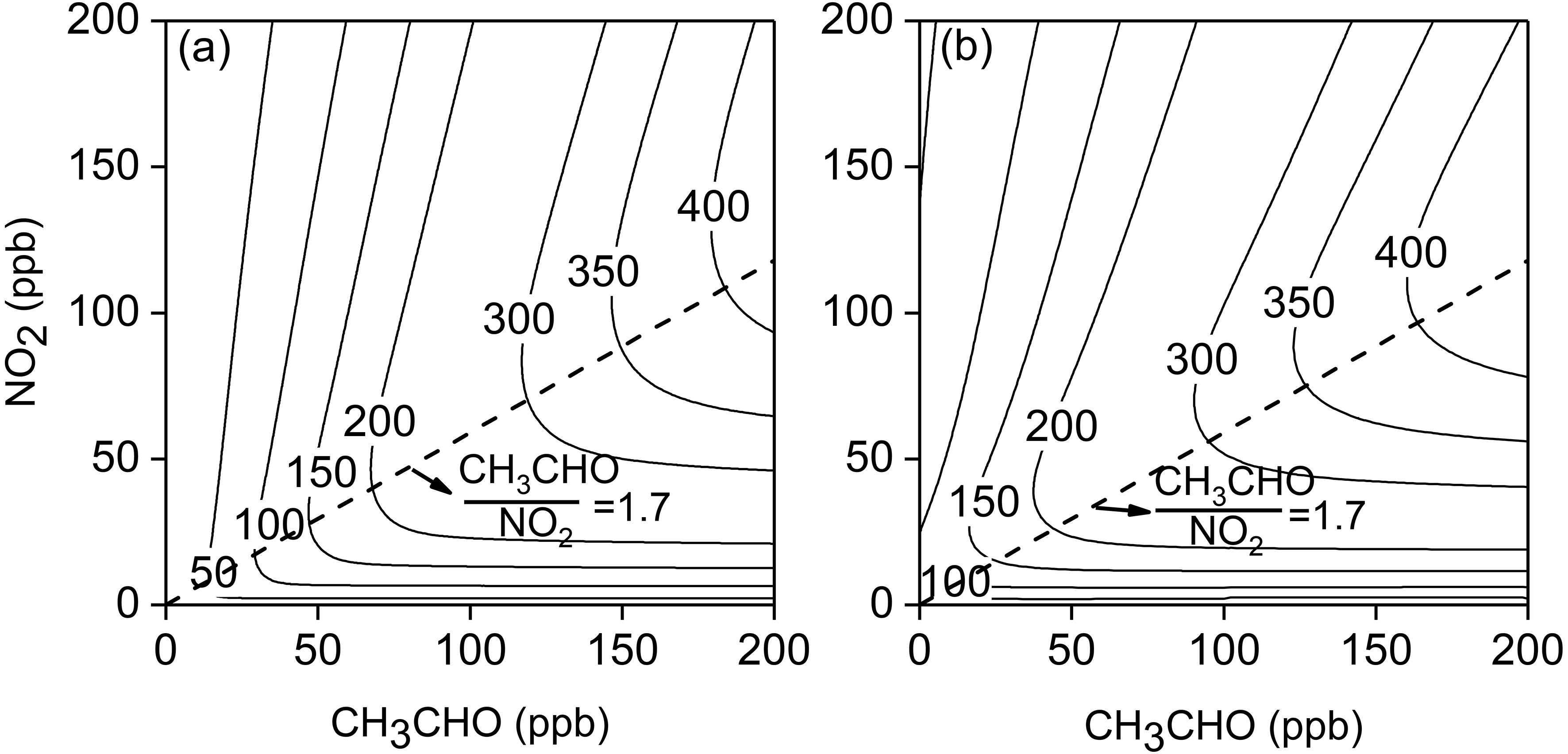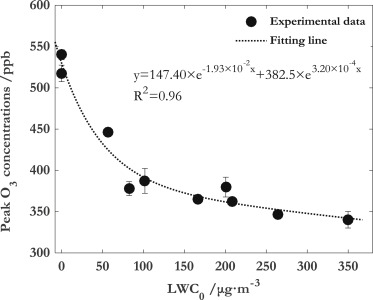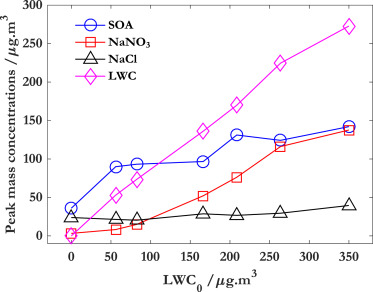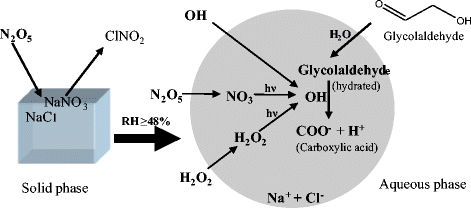组内消息
2021-06-11
乙醛是大气环境中重要的含氧的挥发性有机物(OVOC),是臭氧生成的重要前体物。目前已有研究表明,在部分城市地区乙醛对臭氧污染的贡献已经高于其他OVOC。然而,目前关于乙醛光化学反应的烟雾箱实验研究较少,仅有的实验研究主要关注在低相对湿度(RH)条件下不同光照强度对乙醛光化学反应臭氧生成的影响,而关于RH和反应前体物浓度比值的影响规律目前仍未见报道。此外,目前广泛应用的近显式化学反应机制MCM(Master Chemical Mechanism)对乙醛光化学反应的模拟准确性仍然有待评估,并且由于乙醛同样是其他VOC物种光化学反应的中间产物,因此MCM机理对乙醛光化学反应模拟的准确性显得尤为重要。本研究结合烟雾箱实验和数值模拟方法对乙醛光化学反应过程进行了详细研究。

阅读剩余部分...
组内消息
2016-06-12
Effect of particle water on ozone and secondary organic aerosol formation from benzene-NO2-NaCl irradiations
(颗粒水对苯光氧化生成臭氧和二次有机气溶胶的影响规律)
Highlights
Liquid water content (LWC) can affect the ability in forming O3 and SOA from benzene.
Heterogeneous reaction of N2O5 with H2O(aq) is the major reason for the decrease of O3.
Hydrates from glyoxal were the major contributors to SOA under high LWC conditions.


Wang, Y.; Luo, H.; Jia, L.*; Ge, S. Effect of particle water on ozone and secondary organic aerosol formation from benzene-NO2-NaCl irradiations. Atmos. Environ. 2016, 140, 386–394.
Available online
组内消息
2015-09-11
High light:
液态海盐颗粒可以减少乙烯光氧化生成的臭氧
小分子乙烯降解产物可以在颗粒水中生成二次有机气溶胶

The formation of ozone and secondary organic aerosol (SOA) from ethylene-NO x -NaCl(aerosol) irradiations was studied under various relative humidity (RH) conditions in an indoor smog chamber. In the absence of NaCl seed aerosols, SOA was hardly formed and peak O3 concentrations decreased linearly with increasing RH in ethylene irradiations. For the irradiations with NaCl seed aerosols, when RH <48% (efflorescence relative humidity of NaCl), NaCl existed as solid phase and had little effect on peak O3 concentrations. The infrared spectra from sampled particles showed that SOA was rarely formed on solid NaCl particles. However, when NaCl was in the aqueous phase as RH ≥ 48%, the peak O3 concentration was sharply reduced by over 20 % as compared to experiments without NaCl aerosol, and the absorption of NaNO3 in aerosols was coincidently increased with RH. Model results indicated that the heterogeneous reaction of N2O5 with aqueous NaCl aerosols was the main cause for the sharp decrease of O3. Besides, the absorptions from C-H, C = O, ONO2 and COO groups all greatly increased with RH. Our results show that SOA from ethylene-NOx irradiations was mainly formed through aqueous reactions. The yields of SOA from ethylene were measured to be 1.5 and 2.3% at RH of 65 and 84%, respectively.
Jia, L.; Xu, Y. Ozone and secondary organic aerosol formation from Ethylene-NOx-NaCl irradiations under different relative humidity conditions. J. Atmos. Chem. 2016, 73(1):81-100; doi:10.1007/s10874-015-9317-1
full text








